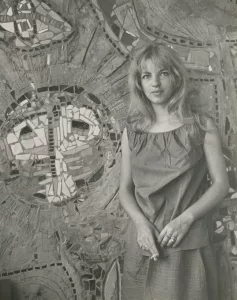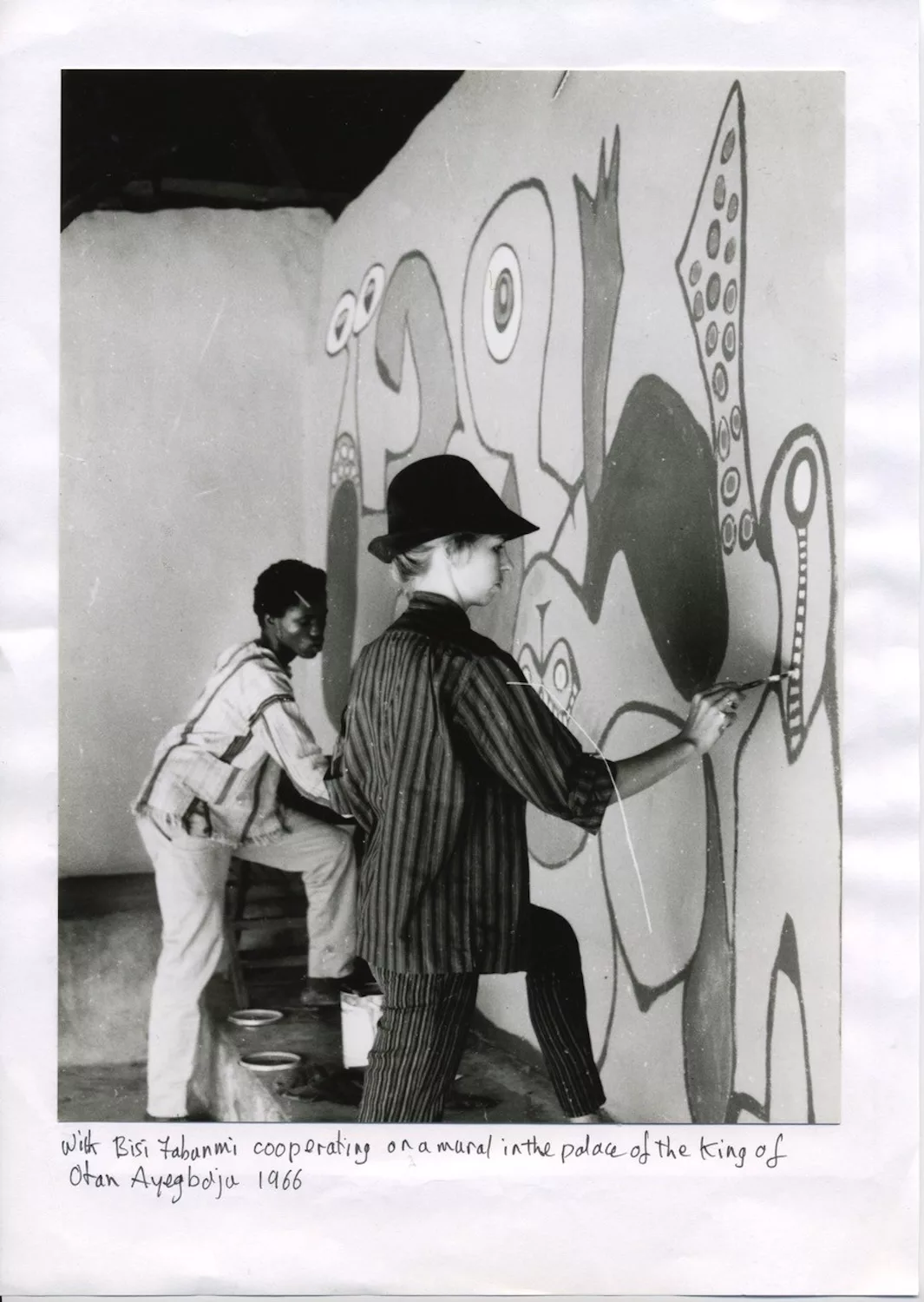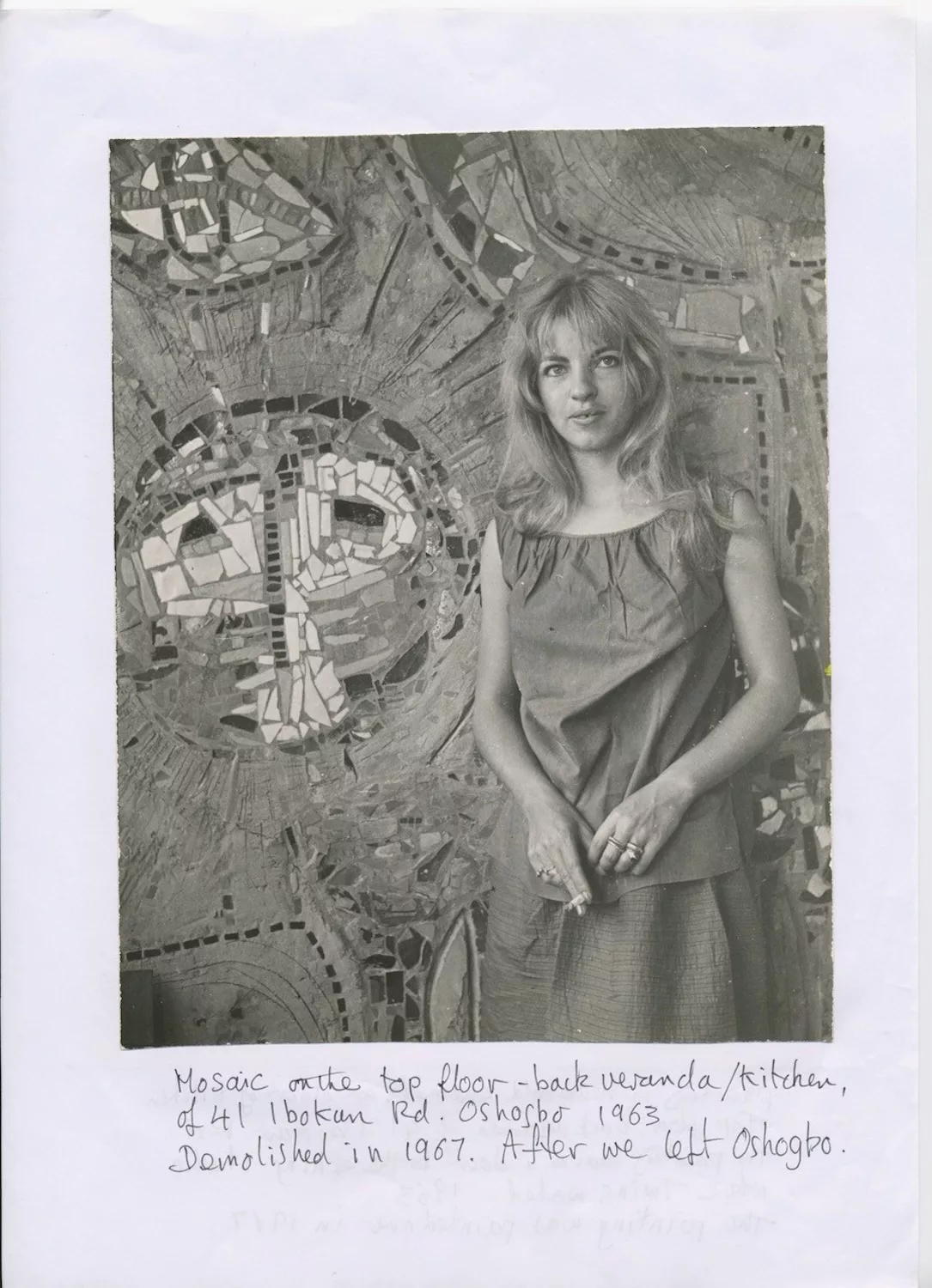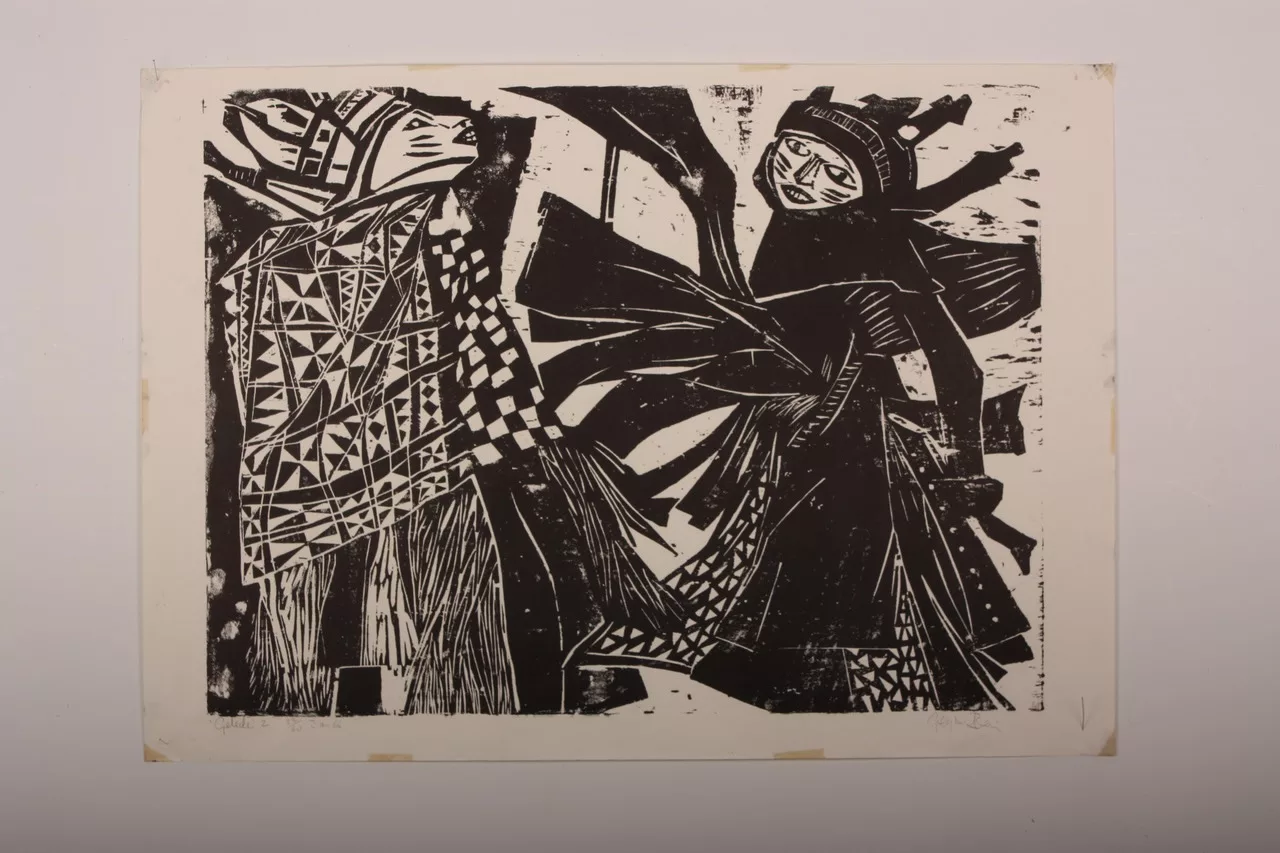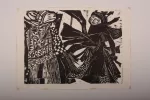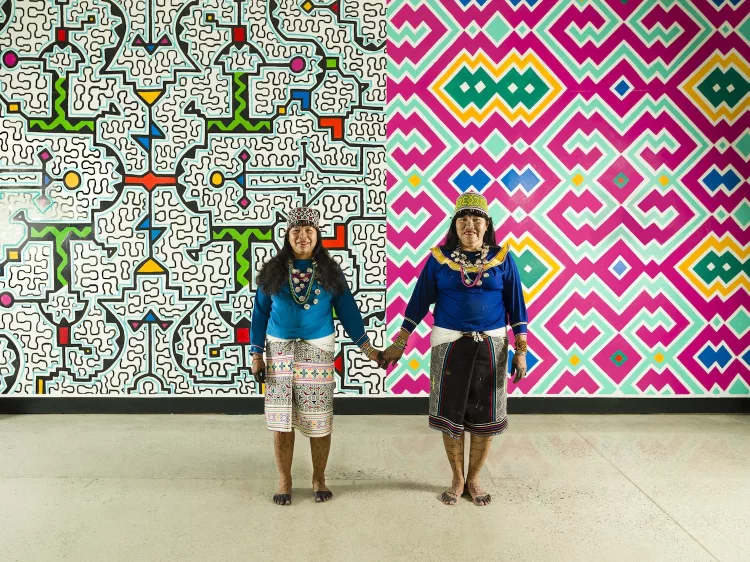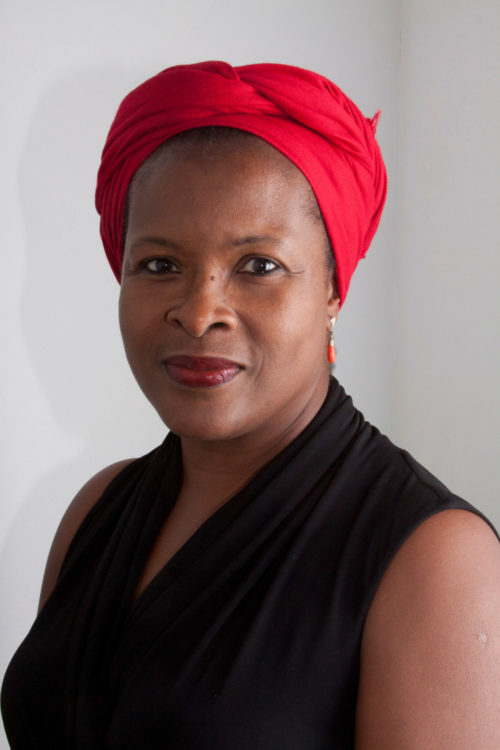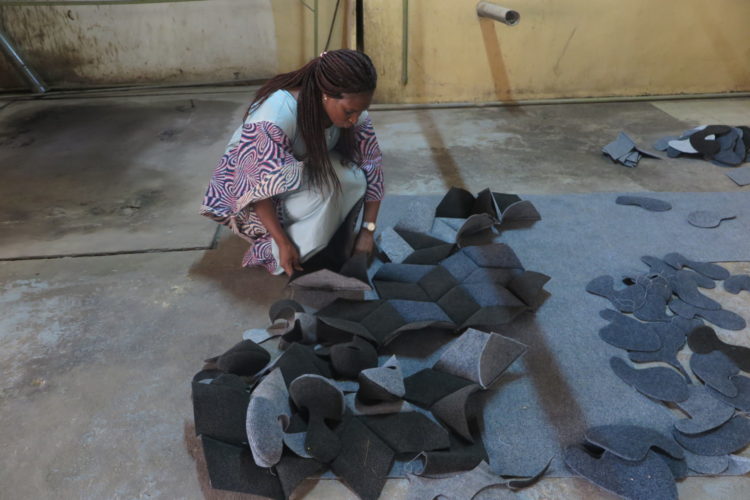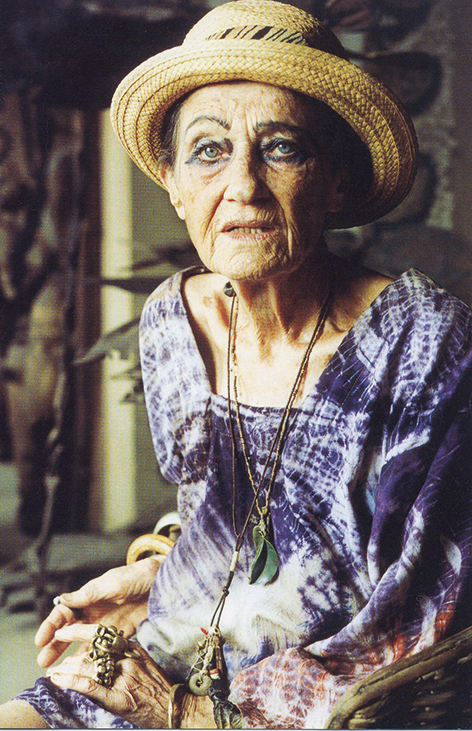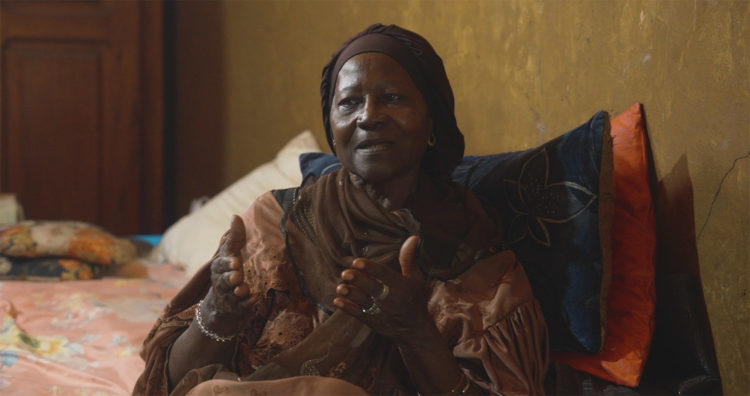Georgina Beier
Greven, Katharina, Naumann, Lena and Onwuegbucha, Iheanyi, ‘Women in Mbari – (Re)Discovering Three Artistic Practices’, in Ezeluomba, Ndubuisi and Grant, Kimberli (eds), Black Orpheus: Jacob Lawrence and the Mbari Club, New Haven, CT: Yale University Press, 2022, p. 83-95
→Tröger, Adele, ‘A Short Biography of Georgina Beier’ in Beier, Georgina (ed), Georgina Beier, Nürnberg: Verlag für moderne Kunst Nürnberg, 2001, p. 9-58
→Beier, Georgina, ‘Modern Images from Niugini’, in Beier, Ulli (ed), Kovave Special Issue, Milton, Qld.: Jacaranda Press. 1974, p. 1-60
The Short Century: Independence and Liberation Movements in Africa, 1945–1994, curated by Okwui Enwezor. Museum Villa Stuck, Munich (February–May 2001); Haus der Kulturen der Welt, Berlin (June–September 2001); Museum of Contemporary Art, Chicago (October 2001–January 2002); and MoMA P.S.1 Contemporary Art Center, New York (February–May 2002)
→Solo exhibition, Bilder aus Sydney und Bayreuth [Images from Sydney and Bayreuth], curated by Ulli Beier. Iwalewahaus, Bayreuth, Germany, July–September 1989
→Solo exhibition, Mbari Gallery, Osogbo, Ibadan, Nigeria, 1963
British-born multimedia artist.
Georgina Beier was a painter, graphic artist, sculptor, muralist and mosaicist – but above all a community-builder whose practice blurred the lines between individual authorship and collective creativity. Through partnership, material experimentation and cross-cultural exchanges, she challenged the myth of solitary artistic genius. Born in Sutton, London, she left home at a young age and briefly attended Kingston Art School from 1954 to 1955. Financial pressures, however, forced her to abandon academic studies, marking the beginning of a lifelong resistance to institutional constraints and a deep commitment to collaborative, intuitive forms of learning.
At just 19, she founded Mural Contractors Ltd., merging artistic production with entrepreneurial initiative – a theme that would echo throughout her later work. In 1959 she moved to Zaria, Nigeria, with her first husband, Malcolm Betts, and began engaging with the Zaria Art Society and its artists, such as Uche Okeke (1933–2016) and Bruce Onobrakpeya (1932–). Before relocating to Oshogbo in 1963, she destroyed all her earlier work in an act of “active forgetting” – a radical gesture to make space for a new visual language and new relationships.
Oshogbo marked a turning point. After marrying the German linguist Ulli Beier (1922–2011) in 1964 – U. Beier had previously been married to artist Susanne Wenger (1915–2009), also working in Nigeria – G. Beier took over the workshops at the Mbari Mbayo Club, where she championed accessibility, spontaneity and experimentation. She worked closely with artists such as Rufus Ogundele (1946–1996) and Jacob Afolabi (1940–2015), in relationships marked by deep mutual influence. Her practice extended beyond painting: she created murals in Oshogbo and Benin City, designed theatre sets and book covers and illustrations, including Leon Damas: African Songs of Love, War, Grief, and Abuse (1961), and shaped the visual identity of Black Orpheus. A Journal for African Literature. Her collaboration with the Yoruba Alarinjo troupe in Erin Osun strengthened her engagement with performance and ritual. The Igunnuko costumes she designed – first worn in village contexts – were exhibited at the Bayreuth Opera House in 1992, exemplifying her ability to move fluidly between vernacular and institutional spaces.
In 1967, while maintaining strong ties with Nigeria, G. Beier and her family relocated to Port Moresby, Papua New Guinea, where she deepened her community-based approach. She collaborated with artists such as Akis (1939–1984) and Mathias Kauage (1944–2003), learned Tok Pisin (an English-based creole language), and in 1971 founded Hara Hara Prints – a textile workshop that empowered women through design and economic opportunity. Around the same time, she began experimenting with iron, producing her first metal sculptures in 1970. Between 1971 and 1974, she co-founded the Ita Yemoo Museum in Ile-Ife, Nigeria, and completed her largest sculpture in 1974 at the University of Ile-Ife. Upon returning to Port Moresby from 1974 to 1978, she directed the Gambamuno Gallery and produced batik and iron works, including a mural for the Institute of PNG Studies.
In 1981 G. Beier co-founded Iwalewahaus in Bayreuth, Germany, with her husband. There, she curated murals and exhibitions, while painting at night and raising her two children. Moving to Sydney in 1984 – and settling there permanently in 1997 – she transformed her home into a creative hub and completed several metal sculpture commissions. Her later works, marked by minimal lines on pale grounds, reflected a quieting of collaboration.
At the turn of the century, G. Beier was featured in several exhibitions at leading Western institutions. These included A Concrete Vision: Oshogbo Art in the 1960s (2000) at the Smithsonian’s National Museum of African Art in Washington, D.C., and The Short Century: Independence and Liberation Movements in Africa, 1945–1994 (2001–2002), a landmark touring exhibition curated by Okwui Enwezor (1963–2019), which highlighted her contributions in fostering experimental practices and supporting fellow artists. She also appeared in Century City: Art and Culture in the Modern Metropolis (2001) at Tate Modern, London, whose “Lagos (1955–1970)” section was also co-curated by O. Enwezor. In the 2010s, her work was shown alongside that of Colette Omogbai (1942–) in Into the Night: Cabarets and Clubs in Modern Art (2019–2020), held at the Barbican Centre in London and the Lower Belvedere in Vienna. G. Beier passed away in Sydney in 2021, at the age of 82.
A biography produced as part of the project Tracing a Decade: Women Artists of the 1960s in Africa, in collaboration with the Njabala Foundation
© Archives of Women Artists, Research and Exhibitions, 2025


